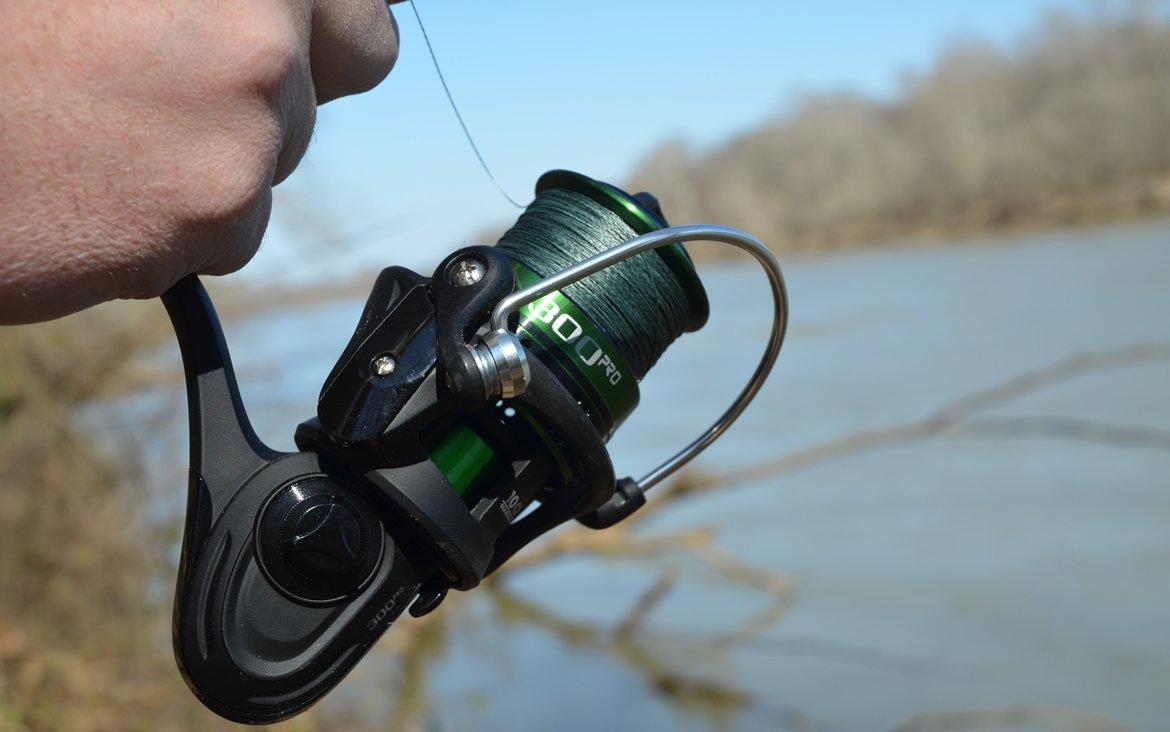Deadly Bass Techniques for Spinning Tackle
Drop Shot
Every bass pro is sure to carry at least one spinning outfit with a drop shot tied to it, especially if spotted or smallmouth bass are in the mix. Most true drop shotting is still done with 4- to 8- pound test line on spinning tackle to quickly drop small soft plastics straight to the bottom. For such light line, some prefer fluorocarbon and some prefer braided line. When using braided line, pros will still tie their drop shot leaders up with fluorocarbon but connect them to the braid with a micro swivel. Spinning rod selection for drop shotting varies depending on the cover, the size and type of line you are using, and the size and type of hook being used. If you’re going to nose hook your drop shot in open water on 6-pound test line, then a more limber medium to medium-light rod is suitable. But if you are Texas-rigging your drop shot around cover on 8-pound test line, something on the medium or medium-heavy side will work better. Either way, the key is to drop the rig straight down, under the boat, and for that there is no substitute for spinning gear.
Shaky Head
This finesse technique is a lifesaver among bass pros when fishing becomes tough due to high fishing pressure or high barometric pressure – or both. As pros often say, “when all else fails, pick up a shaky head!†The word “shaky head†has become the catchall term for a 4-inch finesse worm threaded onto a jighead so the hookpoint is buried into the worm, making it weedless. The shaky head is usually a very light rig: common sizes include 1/8-ounce, 3/16-ounce and 1/4-ounce. The head features some kind of “keeper†that holds the head of the worm to the lead head of the shaky head. Line for shaky heads range from 6-pound test to 10-pound test fluorocarbon with 8-pound test being the most common. Though it’s a finesse technique, setting the hook is still a necessity with a shaky head, so a 6-1/2 to 7-foot rod in a medium to medium-heavy action is suitable. Given the lightweight head and the light line, it’s easy to see why spinning tackle is a must have for this technique. The shaky head has no limits in terms cover, water color, or time of year, so when all else fails, grab a spinning rod with a shaky head.
Wacky Rig
In its most basic form, a wacky rig requires just two fishing staples: a straight-shank worm hook and a straight-tail worm. Simply push the hook point through the middle of the worm and that's it. There are a lot of variations of the wacky rig; many pros prefer to use "octopus" hooks or "wide-gap finesse" hooks on fatter stick worms. No matter how you prefer to go wacky, spinning tackle is a big key in fishing wacky rigs correctly. For starters, wacky rigs are weightless, so spinning gear helps cast them farther. Secondly, wacky rigs are great for skipping under docks and low-hanging trees or bushes and spinning gear excels in the skipping delivery. Finally, wacky rigs are meant to fall naturally through the water and spinning gear is perfect for this kind of presentation since the line essentially "falls" off the spool with little resistance.
Berkley® Bad Shad
The Berkley® Bad Shad is a notoriously productive crankbait in the early spring when water temperatures are still in the 50-degree range. Two popular sizes are the Berkley® Bad Shad #5 and #7. When tied to 8-pound test fluorocarbon on spinning gear, the Berkley® Bad Shad #5 throws far, allowing it to reach its maximum depth, making it a great lure for pre-spawn bass.
